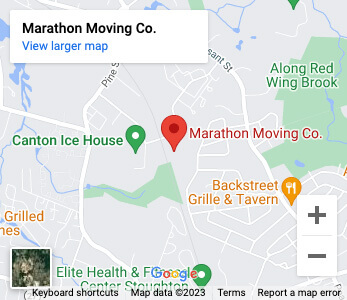The History of the Freedom Trail
Boston, Massachusetts, is a city rich in history, particularly when it comes to the American Revolution. The Freedom Trail is a must-visit attraction that takes you on a journey through Boston’s revolutionary past. In this article, we will explore the significance of the Freedom Trail, the historical sites it encompasses, and the stories that shaped the birth of a nation.
1. The Significance of the Freedom Trail
The Freedom Trail is a 2.5-mile-long pathway that winds its way through Boston, connecting 16 historically significant sites. It serves as a living monument to the American Revolution, offering visitors a chance to walk in the footsteps of the patriots who fought for freedom and independence. The trail is a testament to Boston’s pivotal role in shaping the nation’s history. Live in Boston
2. Starting Point: Boston Common
The journey along the Freedom Trail begins at Boston Common, the oldest public park in the United States. This serene green space served as a training ground for the colonial militia during the Revolutionary War. It provides a tranquil setting amidst the bustling city and acts as a gateway to the historic sites that lie ahead.
3. Massachusetts State House: Beacon of Democracy
As you continue along the trail, you’ll reach the Massachusetts State House. This iconic building, with its golden dome, stands as a symbol of democracy and the seat of state government. Take a guided tour to marvel at its architecture and learn about the history it represents.
4. Park Street Church: The Pulpit of Freedom
Located across from the Massachusetts State House, Park Street Church played a vital role in the abolitionist movement and the fight for social justice. Its steeple has witnessed impassioned speeches from renowned figures such as William Lloyd Garrison and Frederick Douglass.
5. Granary Burying Ground: Resting Place of Patriots
The Granary Burying Ground is the final resting place of many notable figures from the Revolutionary era. Here, you can pay your respects to patriots such as Paul Revere, John Hancock, and Samuel Adams. The tombstones tell stories of sacrifice and honor, reminding us of the courage that shaped America.
6. King’s Chapel: A Blend of Faith and History
King’s Chapel, the first Anglican church in New England, boasts an intriguing blend of architectural styles. Step inside to admire its elegant interior, featuring a majestic pipe organ and intricate woodwork. The chapel’s historical significance lies in its association with religious freedom and the birth of Unitarianism.
7. Boston Latin School: Nurturing Great Minds
Founded in 1635, Boston Latin School is the oldest public school in the United States. Notable alumni include Benjamin Franklin, John Hancock, and Samuel Adams. Explore the school’s rich history and discover how it nurtured the minds of future revolutionaries.
8. Old Corner Bookstore: Gathering Place of Literary Giants
The Old Corner Bookstore, located in the heart of Boston, was a popular meeting spot for literary greats like Ralph Waldo Emerson, Henry David Thoreau, and Nathaniel Hawthorne. Immerse yourself in the literary heritage of the city as you appreciate the significance of this historic building.
9. Old South Meeting House: Sparking the Revolution
The Old South Meeting House served as a gathering place for colonists to discuss important issues and voice their dissent. It was here that the Boston Tea Party was planned, marking a turning point in the fight against British oppression. Step into this historic landmark and feel the energy of those revolutionary times.
10. Old State House: Cradle of Independence
The Old State House witnessed significant events leading up to the Revolution, including the reading of the Declaration of Independence from its balcony. Delve into the exhibits and interactive displays to gain a deeper understanding of the struggles and triumphs that unfolded within its walls.
11. Site of the Boston Massacre: Prelude to Conflict
On March 5, 1770, tensions between British soldiers and colonists escalated, resulting in the Boston Massacre. Visit the site where this tragic event occurred, and learn about the chain of events that fueled the desire for independence.
12. Faneuil Hall: The “Cradle of Liberty”
Faneuil Hall has been a marketplace and a forum for public debate since the 18th century. Samuel Adams and others delivered impassioned speeches here, inspiring the masses to stand up against British rule. Today, it continues to be a vibrant hub of activity, hosting lively street performers and bustling shops.
13. Paul Revere’s House: A Patriot’s Abode
Step into the home of Paul Revere, a silversmith and one of the Revolution’s most iconic figures. Explore the rooms where he lived and hear tales of his daring midnight ride, immortalized in Longfellow’s poem, “Paul Revere’s Ride.”
14. Old North Church: The Midnight Ride
The Old North Church played a pivotal role in Paul Revere’s midnight ride to warn of the British troops’ approach. Climb the steeple for a panoramic view of the city and reflect on the bravery of those who risked everything for the sake of freedom.
15. Bunker Hill Monument: A Tribute to Bravery
The Freedom Trail culminates at the Bunker Hill Monument, a towering obelisk that commemorates the Battle of Bunker Hill. Climb the 294 steps to the top for a breathtaking view of Boston and its surroundings. Take a moment to honor the bravery of those who fought in the early stages of the Revolution.
Conclusion
Exploring Boston’s Freedom Trail is a journey through time, offering a glimpse into the events and individuals that shaped the birth of a nation. From the stirring speeches at Faneuil Hall to the solemn grounds of the Granary Burying Ground, every step along the trail reveals stories of resilience, sacrifice, and the relentless pursuit of freedom.
FAQs
- Is the Freedom Trail suitable for children?
- Yes, the Freedom Trail offers a captivating and educational experience for children of all ages. Many sites have interactive exhibits and engaging activities specifically designed for young visitors.
- How long does it take to walk the entire Freedom Trail?
- The time it takes to walk the entire Freedom Trail can vary depending on your pace and the amount of time you spend at each site. On average, it takes about 2-3 hours to complete the trail, but you can certainly take longer if you wish to explore the sites in more detail.
- Are there guided tours available along the Freedom Trail?
- Yes, guided tours are available for those who prefer a more structured and informative experience. These tours are led by knowledgeable guides who provide historical context and insights into each site.
- Is there an admission fee to visit the sites on the Freedom Trail?
- Most of the sites along the Freedom Trail are open to the public free of charge. However, some sites, such as the Old South Meeting House and Paul Revere’s House, may require an admission fee for entry.
- Can I join the Freedom Trail at any point, or do I have to start at a specific location?
- You can join the Freedom Trail at any point along the route. Each site is marked with a red line or a plaque, making it easy to follow the trail and explore the sites in any order you prefer.
- Is the Freedom Trail accessible for individuals with mobility issues?
- While some sites along the Freedom Trail may have limited accessibility due to their historic nature, efforts have been made to improve accessibility. Many sites offer accommodations such as ramps and elevators, and alternative routes are available for those with mobility issues.
As you embark on your journey along the Freedom Trail, prepare to be immersed in the captivating history of Boston’s revolutionary past. From the stirring speeches that ignited a revolution to the final resting places of patriots, this trail offers a unique opportunity to connect with the spirit of America’s fight for freedom. So lace up your walking shoes and set out on a remarkable adventure through Boston’s rich historical tapestry.
Related Post
Recent Posts
Contact
Information
Hours Operations
8:00 AM to 5:00 PM – Monday to Friday
Office Closed – Saturday to Sunday
Phone:781-650-4952
Fax: 781-963-3398
info@marathonmoving.com

Marathon Moving is an agent for Allied Van Lines, one of the world’s largest moving networks. Allied Van Lines also shares Marathon’s strong commitment to quality and customer satisfaction.
Hours Operations
- 8:00 AM to 5:00 PM – Monday to Friday Office Closed – Saturday to Sunday
Contact Info
Marathon Moving Co.
Contact Info
© Copyright 2000 – 2025 Marathon Moving – Sitemap
Marathon Moving License Info MDPU 30747 DOT 943487 MC 405568




